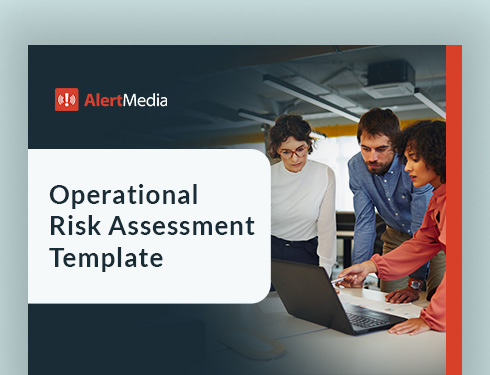
Strong Target Hardening Techniques for Businesses
Learn what target hardening is, why it’s critical to employee safety and business continuity, and what you can do to make your organization more secure.

The past two decades have seen an upward trend in mass shootings in America. An FBI review of active shooter events identifies a total of three incidents that took place in 2000 compared to a total of 30 in 2019. The same review details the fact that, through the years, most of these attacks occurred at places of business, schools, hospitals, government facilities, and houses of worship. In all of these places, employees are potential victims of violence. Hence, preparedness needs to be a top priority for every organization.
Your physical office space or worksite plays a key role in creating a safe working environment. Just as people install home security systems and window locks to prevent burglars, businesses can take action to protect their employees, their company, and the community from active shooter events or any other potential threat.
In this post, you’ll learn what target hardening is, why it’s critical to employee safety and business continuity, and what you can do to make your organization more secure.
What Is Target Hardening?
Target hardening is one of the most important crime prevention measures employed by governments, schools, law enforcement, the military, and private organizations. This security tactic aims to deter potential attackers through a range of protective measures.
Examples of target hardening techniques

Common target hardening measures include:
- Physical modifications, such as secure locks and motion lights
- Procedural elements like visitor screenings
- General access control or biometrics
- Crime prevention through environmental design
All buildings should have some sort of protection against potential attacks, break-ins, or other criminal activity, but specific types of structures make more attractive targets for terrorists and criminals. So-called “soft targets and crowded places” (ST-CP) include any locations that are “easily accessible to large numbers of people and that have limited security or protective measures in place,” according to the Department of Homeland Security.
Government buildings, bars and restaurants, large office buildings, religious buildings, iconic commercial properties, sports or concert venues, transportation systems, chemical plants, energy facilities, monuments, and other public gathering places may be soft targets. Due to their unique circumstances, each type of facility presents distinct building hardening and attacker mitigation challenges.
Benefits of Hardening Techniques for Your Business
Among other factors, attackers often choose their targets based on the physical structure itself. Target hardening enhances the security of a building or structure by making it a more difficult, and therefore less attractive target. Businesses that use target hardening to reduce or eliminate weaknesses and other vulnerabilities can:
- Lower the chance of an attack or break-in
- Minimize material damage in the event of an attack
- Reduce the chances of injuries and loss of life, as well as the severity of any injuries that do occur
Target hardening is not foolproof, as almost any building or site can be breached or damaged with the right equipment and know-how. However, taking measures to secure an area will go a long way in keeping your people and your business safe. What’s more, you can provide employees with peace of mind that you’re taking measures to protect them.
7 Target Hardening Strategies
Businesses have an obligation—both moral and legal—to keep people safe while at the workplace, whether that’s a warehouse, retail location, corporate office, or any other worksite. This obligation is your duty of care. Here are some steps you can take to bolster security and safety.
1. Conduct a vulnerability assessment
Effective measures for target hardening vary from site to site. Thus, a vulnerability assessment—or threat assessment—is key to enhancing your building’s overall security. Conduct a thorough analysis to understand threats, vulnerabilities, and potential risks associated with your specific location or worksite.
Look for potential weaknesses across the entire organization, including facilities, systems, networks, and procedures. Your evaluation of physical spaces should encompass all:
- Entry and exit points, including windows
- Interior and exterior communal areas
- Elevators
- Stairwells
- Parking areas
- Public and employee bathrooms
- Mailrooms, loading docks, and storage rooms
- Control centers
- Employee offices
Identifying gaps will help you determine what target hardening techniques to use and which to prioritize.
2. Control how people access your building
Actively maintaining control of all entries and exits adds a strong line of defense against intruders. Non-customer-facing businesses should keep access doors locked at all times and use secure locks and keyed or badge-controlled access to ensure only authorized personnel can enter. Depending on the size of your business, you may consider additional access precautions like:
- Visitor screening: Require visitors to check in with a receptionist or guard and provide identification before being admitted.
- Gated entry: Implement gated entry to make it harder for predators to enter or even approach your building. Gated entry to the parking lot can be controlled by code, magnetic key card, or managed by a security guard.
- Security personnel: Hire security for access points or the front lobby. Whether they’re supervising building access or patrolling the premises, the presence of uniformed security personnel will make aggressors think twice before launching an attack.
3. Install a security system
Digital security goes hand-in-hand with physical security—it’s what we call converged security. Businesses, especially in customer-facing industries like retail and hospitality, should use onsite security devices to deter criminals. Many non-customer-facing businesses can also benefit from video surveillance, such as those located in high-traffic areas or in sensitive industries.
Security setups vary from a single camera to intricate systems, including wireless motion detectors, wireless door and window sensors, and alarms. If you decide to use closed-circuit television (CCTV) or video surveillance for your business facilities, you should:
- Make sure cameras are clearly visible and positioned to provide a 360-degree view, without blindspots where an intruder can hide.
- Consider pan-tilt-zoom (PTZ) cameras for surveillance of a large area with a single camera.
- Place a monitor near your building entrance so people see themselves when they enter.
Larger organizations may also want to consider advanced safety and security measures like a duress alarm with central monitoring and an intrusion detection system.
4. Consider additional physical security
For larger sites, a physical security assessment might be necessary to reduce vulnerability and mitigate damage. Evaluate your space and consider the following physical security controls:
- Install solid (not glass) external doors to shield from any potential shots or blasts.
- Apply protective window films or bullet-resistant glass and use roll-down shutters for after-hours.
- Use barriers, curbs, or gates to eliminate vehicle access to side or back areas.
- Allow parking only in clearly marked parking spots.
- Place walls or hedges strategically to block the premises from outside, but don’t block entrances or provide hiding places.
- Make sure all internal and external areas are well lit.
5. Map evacuation routes
If possible, the safest response to an active shooter event is to flee the area immediately. And the Occupational Safety and Health Administration (OSHA) requires that at least two exit routes be available to permit prompt evacuation of employees and other building occupants during an emergency.
Make employees aware of primary and secondary escape routes, assembly points, and the location of safety equipment, such as fire extinguishers, first aid kits, and alarms. To comply with OSHA standards, make sure emergency exit routes are:
- Clearly marked
- Unobstructed at all times
- Wide enough to accommodate all evacuating personnel
6. Identify shelters & hiding places
In many cases, escaping the scene is not an option. In this situation, employees should hide out and take shelter where possible. Ensure there are spaces available for your employees to shelter in place, such as a closet, office, or break room. Any room with a locked door and few windows can serve as a potential shelter or hiding place.
Help employees identify potential hiding places before an incident occurs—doing so will prepare your teams for the unthinkable and could very well save lives. The Department of Homeland Security advises that a hiding place should:
- Be out of the attacker’s view
- Provide protection if shots are fired in your direction (i.e., an office with a closed and locked door)
- Not trap you or restrict your options for movement
7. Implement an emergency communication system
In an emergency situation, communication is vital to ensuring the safety of all employees. But when disaster strikes, things can get chaotic quickly. People may leave their phones behind or not be able to use them safely. Networks may fail or even be cut off. An emergency communication system lets you check on employee safety and whereabouts or send important updates via multiple channels at once.
The best emergency and crisis communication systems include features such as:
- Two-way messaging so employees can request assistance or provide status updates
- Communication templates to make responding quick and easy
- Mobile apps so safety leaders can reach out and respond from a safe location, on any device
- Integrated threat intelligence to help you monitor and detect potential threats 24/7
Hope for the Best, Prepare for the Worst
Target hardening is a major first step in making your buildings and structures less prone to attack. Site hardening measures should work hand-in-hand with your company’s emergency response plans, as well as employee preparedness training and drills to enhance overall safety.
While no one wants to experience an emergency at work, whether it’s an armed break-in or a violent intruder—that doesn’t mean you shouldn’t prepare for it. Doing so will put your people and your business in a much better position if the unlikely does occur.


![Active Shooter Preparedness: How to Protect Your Business [+ Checklist]](https://www.alertmedia.com/wp-content/uploads/2019/04/active-shooter-preparedness-scaled.jpg)

